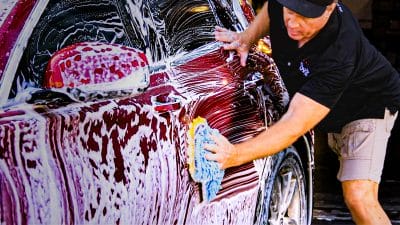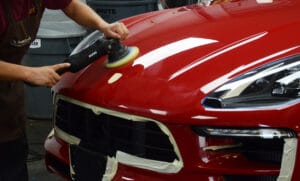Last Updated April 29, 2022
Let’s talk about polishing. Sometimes hand polishing is appropriate, sometimes a machine buffer is needed, and other times there should be no polishing done at all. We wanted to break down what polishing methods were appropriate for which scenarios in the simplest way possible.
Hand polishing:
- Small areas
- Door handles that are riddled with key scratches
- Badging, trim

- Anywhere a machine buffer simply can’t fit
- Sensitive Paint
- Antique
- Single stage
- OEM has warned you that the paint on your car is particularly sensitive
- Light contaminants
- VERY fine etching
- Fine wash marks
Machine buffer:
*Rotary/fixed axis buffers should only be used by professionals. Random orbital buffers can be used by at-home car enthusiasts*
- Large areas
- When your entire car is swirled and scratched, you’re going to exhaust yourself (physically and emotionally) trying to even everything out by hand.
- Specific colors
- Dark paints always show the most swirls, so trying to correct this paint by hand is a never.
- Damaged paint
- If paint is terribly swirled, contaminated, and generally sad, you need to polish with a machine buffer. Hand polishing just won’t do the job.
NO polishing at all:
- Matte paint
- Matte wrap
- Dry carbon fiber
- Anything matte, satin, denim, flat, or any variation of this type of finish








how can I tell when the area I’m polishing is done or “flash”?